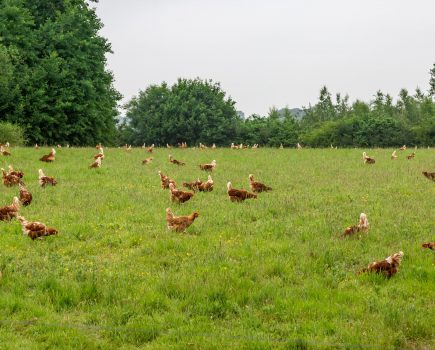Keeley Thomas has adopted permaculture principles in her henkeeping – and she finds it beneficial for her, the garden and the birds
Keeping a few chickens for eggs was born (as it often is) from my desire to lead a greener, more self-sufficient lifestyle. I wanted fresh eggs and a connection with where they’d come from, but it was only when I began studying a permaculture design course that I realised the full potential of these easy, rewarding birds to take an active role in the management of the garden and our carbon footprint.
Permaculture is all about maximum output for minimum input: we all know that we can pay around £300 for that first egg in start-up costs (never mind time and effort!). It makes sense to ensure that the way we keep our chickens keeps costs down and allows us the opportunity to at least break even in the long run and doesn’t take up hours of our time every day.
Applying the permaculture approach to my chicken set-up seemed like common sense. I already had the guinea pigs mowing the lawn, so why not get my chickens earning their keep, too?
I started by looking at what I already had to work with. This consisted of a very small garden, a shed, a raised vegetable bed and a lawn. I added a pop hole and perches to the shed and bought a small, roofed run for the side. I have chickens come and go as part of my job, so I knew from experience that Cream Legbars, Buff Sussex and Welbars, three of my favourites, were more than capable of doing the job: friendly, good layers and hardy, but might have too big an impact on the space long term. Bantams would be a better fit.
A dwarf plum tree provided shade and shelter for the run, with the added bonus of fallen fruit for the chickens. If you haven’t got room for a tree, try growing beans and peas up over the outside of the run for the pods to dangle through. Up against the run, I planted leaf crops that will keep the chickens occupied for hours: comfrey, sorrel, chives, parsley, Good King Henry, etc. The mesh of the run protects the plants from total destruction, but the birds can enjoy pecking at any leaves that grow within reach. There’s usually some left for us, too. Wire can also be used to encase plants within the run to give them a fighting chance; my imagination is yet to get going with chicken-maintained topiary! It was great fun planning the plants for a chicken run and choosing crops that both the chickens and us would enjoy and surprising what common garden favourites are edible (www.pfaf.org is a great place to start).
Water catchment is an easy thing to plan. Most of us catch our birds drinking from puddles when given the chance, so rain water obviously appeals! I’m planning guttering for the shed connected to an open-topped drinker. This will refresh whenever it rains, but will still need regular checking and cleaning. Netting prevents any foreign bodies falling in and a squeeze from a clove of garlic will stop mosquito larvae.
I have built a cage over my vegetable bed to keep my birds out when they are free ranging and in when I want the ground cleared and fertilised. My system could have included a chicken tractor and, if you can, always go for a mobile system. Not only does this give your chickens fresh ground to scratch at, preventing the build up of parasites, it can be moved wherever you need the ground rotovating. If you have a greenhouse, the chickens can be moved in there over winter to clear it in the same way and to exchange heat. A simple cloche for seedlings on top of a coop roof makes perfect sense. The warmth from the chickens raises the temperature for growing plants and the heat of the sun helps keep the birds warm, too.
Most of what our birds need can be produced on site or sourced locally. Their bedding can be used as mulch on vegetable and flower beds (the worms will eventually work it into the soil for you). Chicken manure is a great source of nitrogen for plants, just remember to keep it out of direct contact with young plants, or they will ‘burn’. Gardening neighbours also love it! It makes sense ethically, too: most commercial chicken manure fertilisers are sourced from abroad, using manure from intensively farmed hens; eggs aren’t the only valuable output!
Feed does still need to be bought in, of course. We do use less of it because our birds find so much of their own food and we source it locally. It is easy to grow some less traditional grain crops, most of which have greater levels than standard mixed corn of the proteins, vitamins and minerals essential for tasty, nutritious eggs and healthy birds. We grow small amounts of amaranth, millet and alfalfa, and are going to try lentils, chick peas and maize. As much as possible, we let the birds do the picking themselves, in keeping with the permaculture idea of minimum input. This approach has the added bonus of encouraging natural behaviours and creating happy hens.
My system integrates the chickens into the kitchen garden, rather than seeks to separate them from the other things going on; it’s all about connections. It is a long way from permaculture perfection, but a cluck in the right direction.
* Keeley Thomas, author of this article, is a development worker for Growing with Schools, a project promoted by The Federation of City Farms and Community Gardens. She has helped a number of schools get started in henkeeping. See www.farmgarden.org.uk/education







